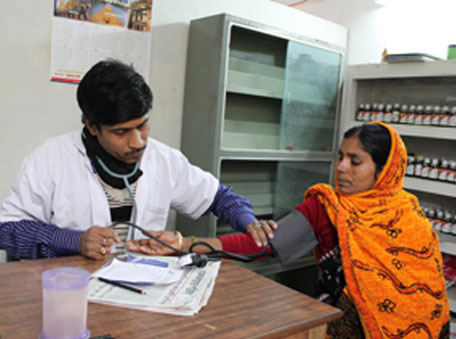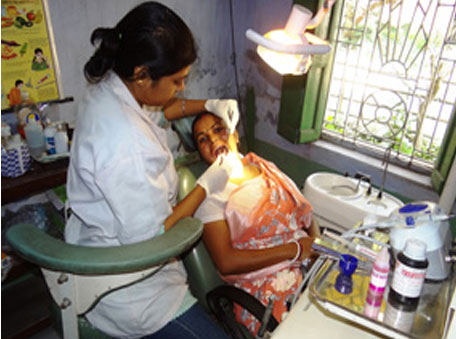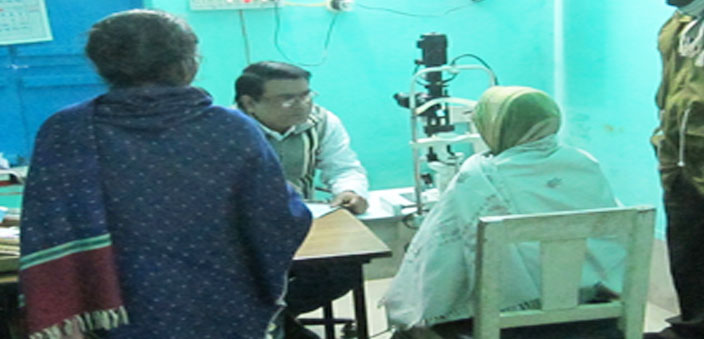Healthcare is the right of every individual, but lack of proper infrastructure, inadequate and expensive medical facilities, under qualified medical practitioners, inaccessible medical assistance have contributed towards the deplorable health care condition of the 600 million rural population in India. According to the 2013 economic survey, the total government expenditure on health in 2010 was estimated to be 4.1% of GDP. While 78% of the Indian population resides in rural areas, only 2% of medical professionals are available in these areas. Lack of proper implementation of various government policies and programmes targeted towards rural population and poor commitment of the medical practitioners, also aggravated the situation. Rural poor often fall victim to under qualified doctors in the vicinity of their homes, who extract large sums of money for even basic treatment. The only other alternative available is to travel to private hospitals located in urban areas, an activity which is tedious, time consuming and expensive.
The Rural Health Care Foundation
The Rural Health Care Foundation (RHCF) offers primary health care to the underprivileged rural and urban slum population residing in the remotest villages and urban slum of West Bengal. In 2009, RHCF started its first centre at Mayapur in Nadia and currently it runs 10 PHCs (Primary Health Centres) in four districts of West Bengal, India. Each centre has four departments – general medicines, dental, optometry, and homeopathy. Patients are charged nominal fees against which they get consultation from qualified medical providers and free medicines. It has tie-ups with renowned hospitals for secondary referral treatment, free of cost. This organisation was formed by brothers Anant and Late Arun Nevatia. Arun was diagnosed with cancer at an early age and during his prolonged treatment, they realised how the expensive treatment would be beyond the reach of the poor. This led them to set up RHCF.

Our other focus areas are to develop the roads and railway system, ensure power supply to make it conducive to set up more heath care facilities. The rural population needs to be educated about basic sanitation, health, nutrition and hygiene, and have to be encouraged to visit doctors in order to address any health related issues. Timely treatment and intake of medicine will decrease the infant mortality rate and maternal deaths. Attempts should be taken to develop the quality of living for a healthy future. Women, children and elderly people are the most vulnerable. A majority of the people from the rural community are either farmers, peasants, daily wage earners or contract labourers. When men go out to earn money, women and the children are left behind with meager money to survive on. Health related issues are neglected out of the fear of spending. In many cases, visits to doctors only happen when the matter is escalated to a great level. Hence, focus should also be related to child and women health and nutrition.
The government’s role
Basic health care should be the immediate focus, since many rural places are devoid of any basic medical assistance within a 50-km radius.
State government-run medical facilities in these areas are practically dysfunctional due to limited medical resources, substandard equipments, low supply of medicines, lack of qualified and dedicated human resources and gross negligence in dealing with patients. Though at various levels the government has come up with programmes and policies, it falls short of proper implementation. Hence in many places, state-run medical facilities are present only on paper, but not in practice. Frequent mass health care awareness programmes and medical camps should be organised. Mobile clinics should be launched to make primary health care reach the doorsteps of the poor.
But are the funds allocation by the government sufficient? PHCs in rural India are short of more than 3000 doctors, with the shortage being 200% over the last 10 years, according to an analysis by India Spend. Lack of public medical professionals leads people to travel to far flung places and in the process compromise one day earning. Besides, private medical services are expensive in nature, thereby making it practically unavailable to the rural poor. The government should make attempts to increase manpower in public hospitals.
The health of rural India
Rural India has severe health related issues.
Rural India is not healthy enough and steps should be taken to ensure that everybody irrespective of age, class and economic status should get access to basic health care. Everybody has the right to lead a healthy life.
An impact story
Gauhar Bibi, age 40, has a family of six members to feed. She is the sole bread earner in her family who travels 10 km to and from her workplace, everyday. She works in a bidi making factory for the last four years, ever since her husband passed away. Lately, she was suffering from low eyesight and the condition was deteriorating with each passing day. Lack of medical facilities in the vicinity of her neighbourhood made the treatment almost inaccessible to her. She was unable to travel far as that would lead to a sacrifice of a day’s wages which she could not afford. At this juncture, she came to know about the PHCs built by the Rural Health Care Foundation in the vicinity, where she could be diagnosed, receive treatment and a weeklong supply of medicines at a nominal amount of Rs. 20 only.

When Gauhar Bibi visited RHCF’s Topsia centre, she received immediate medical attention which came as a surprise to her. Being a member of the deprived and underserved community she was habituated to insensible, negligent and callous behavior of the doctors she had encountered previously. Unlike less qualified local doctors, the doctor at RHCF treated her with great care. The doctor not only advised about the prescribed medicines, but also spoke to her about basic sanitation and hygiene.
Journey to success
The inspiration behind such initiative was dated back to the days when Arun was diagnosed with Hodgekin’s Disease. He was 10 that time and since then he suffered through three relapses and finally was diagnosed with Leukemia in 2008. His regular visits to the hospital coupled with expensive treatment, chemotherapy and medicines led to the realisation of the true condition of the health care sector prevalent in Bengal. In the era of expensive treatment, the brothers understood the predicament of the poor people who often are unable to afford quality treatment. It was this realisation which led to the opening up of the first health care centres at Mayapur in Nadia district of West Bengal, in 2007.
However, behind the success story is a history of hard work, sacrifices, dedication and perseverance. In order to serve the underprivileged, both the brothers left their lucrative careers in real estate. They embarked on an unpredictable, unforeseen journey of philanthropy which very few from their fraternity, would pursue. Undeterred by the dirty politics played by the local quacks and private practitioners, RHCF was successful in building trust among people. In no time, the centre witnessed heavy footfall, with remarkable outcomes.
The initiative which started as a one-day clinic concept of eye care, dentistry and general medicine, soon became a full-fledged clinic running six days a week. All at a negligible cost, within the reach of the poor community.
The exemplary services provided by the Mayapur Centre had to be replicated in other parts of Bengal. Hence, RHCF came up with 10 basic healthcare centres spread across these four districts of Bengal.
The journey is yet to reach its crescendo. RHCF is hoping to reach out to more needy patients who require immediate medical attention. Mobile vans delivering medical services at the doorstep of the poor is also envisioned. Centres are getting revamped with the purchase of new medical equipment. Research is also being conducted to identify new places to open up new centres. It is only a matter of time now when RHCF will spread its wings to other parts of the country and be a name to reckon with in the field of medical philanthropy.


 [/column]
[/column]